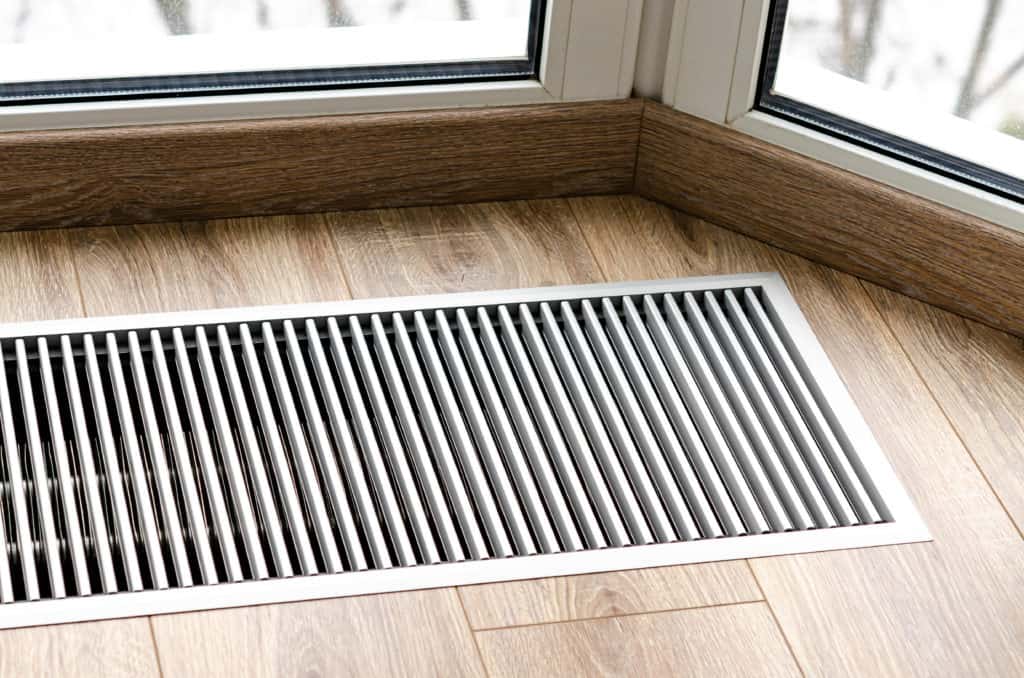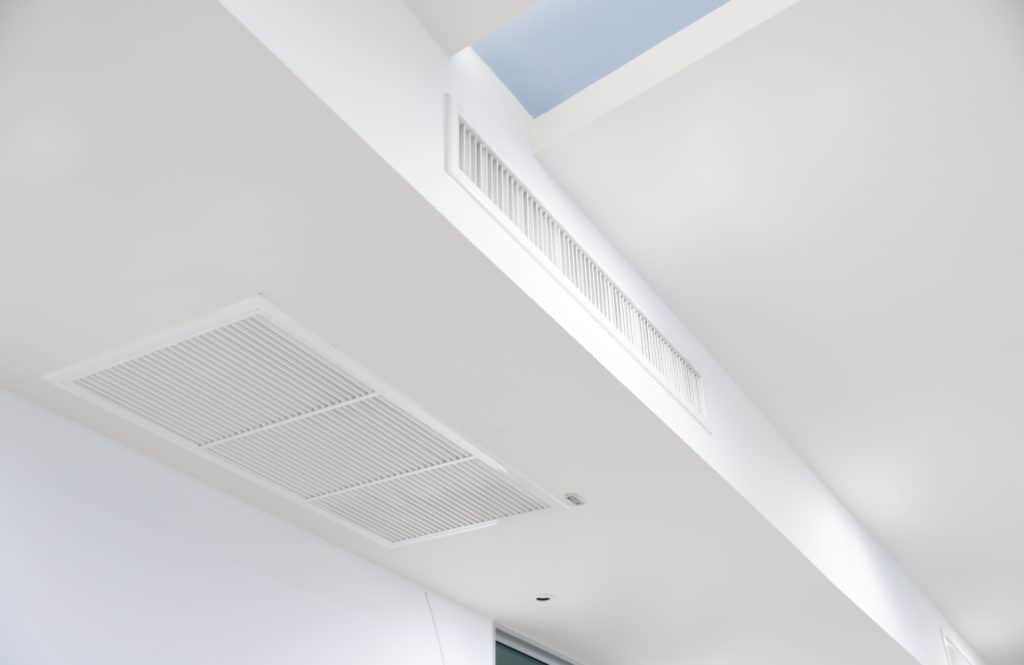Should Air Vents be High or Low?
 Whether you’re a first-time homeowner or you’ve lived in several homes during your life, we’ll bet you’ve rarely thought about the air vent placement. As long as the home is warm or cool depending on the weather, it usually doesn’t matter. But, the builder likely had a reason or two for where the air vents were installed.
Whether you’re a first-time homeowner or you’ve lived in several homes during your life, we’ll bet you’ve rarely thought about the air vent placement. As long as the home is warm or cool depending on the weather, it usually doesn’t matter. But, the builder likely had a reason or two for where the air vents were installed.
We’ll discuss the basics, pros and cons of floor and ceiling installation, and how it all depends on your personal preferences.
Air Supply Register and Return Grill Basics
Each room should have a supply and return vent
First, let’s talk about what each vent does. A supply air vent pushes conditioned air from the HVAC system and ductwork into the room. A return vent pulls flat air back into the ductwork and channels it toward the HVAC system to be reconditioned.
How do supply and return vents work?
Your home’s HVAC system pulls unconditioned, or ambient, air into the ductwork. The air travels through the HVAC unit where it’s either warmed or cooled then the air is pushed back through the ducts and into individual rooms through the supply vents. As the air meanders unseen, it’s eventually pulled back into different ducts through the return vent and sent back into the HVAC unit to continue the heating and cooling cycle.
Does my vent use an air supply register or a cover?
It depends on whether the vent is a supply or return. Supply vents usually have an air supply register on the top which features a damper or moveable flaps. The damper or flaps can be opened or closed using a wheel or lever to allow full airflow into the room or partial.
Floor Vent Pros
- More efficient heating: Because of warm air’s natural ability to rise, you’ll enjoy more efficient and effective heating during the colder months with floor air vents.
- Better accessibility: If there’s an issue with a floor vent, you don’t need a step stool or ladder to reach it. Plus, many people simply sweep or vacuum right over them when cleaning.
 Floor Vent Cons
Floor Vent Cons
- Collecting dust and debris: As dust and other small debris settles on the floor, it’ll also collect on the floor vents. When the HVAC system blows air, the dust simply flies into the air again before resettling. This can trigger or increase respiratory irritation in people and pets.
- Particular furniture arrangement: Depending on the size of the room, you might have to make several compromises for arranging furniture with floor vents.
Ceiling Vent Pros
- More efficient cooling: Homes in the southern half of the United States use air conditioning up to half of the year. Ceiling vents are simply the opening for cool conditioned air which naturally sinks towards the ground.
- Extra floor and wall space: You won’t have to worry about impeding the air flow in or out of a ceiling vent when arranging furniture or hanging photos and other wall decor.
 Ceiling Vent Cons
Ceiling Vent Cons
- Potentially higher energy costs: The amount of heat transfer loss through ductwork in the ceiling and/or attic can increase your energy costs as the HVAC system has to produce more conditioned air to compensate.
- Inaccessible: If a ceiling vent needs to be inspected or repaired, you may have to move furniture out of the way for an HVAC technician to stand on a ladder.
Can I Close Vents in Unused Rooms?
You can, but it affects the comfort in your home and efficiency of the HVAC system. The system installed is meant to deliver a set volume of air to your home based on the home’s square footage. The HVAC continues to send the same amount of air regardless of closed vents, and air pressure builds inside the ductwork if too many vents are closed. The HVAC system works more than it should to pull air back in, lowering the overall energy efficiency and creating uneven heating and cooling in your home.
It all depends on your personal needs
Your heating and cooling preferences will differ from your neighbors, which means what works for them won’t necessarily meet your lifestyle. If you’re considering buying a new home or building, keep these three tips in mind for air vents that fit your personal needs.
- Keep air ducts close to the ceiling: When air ducts are installed near or inside the ceiling, it’s usually the most energy-efficient placement. You’ll have more even heating and cooling and lower energy consumption.
- Consider your lifestyle for vent placement: You want the vents in the most usable locations for maximum comfort, but not in places that are inaccessible for cleaning and maintenance.
- Align ductwork with your home’s layout: Homes with open layouts might not need as many vents as traditional walled homes. Also, not all HVAC systems blow air into every room.
The next time you need to talk with an HVAC professional about an air vent issue, you’ll have the knowledge to explain what the vents are or aren’t doing. Call Bell Bros today, if you have any air vent questions.

